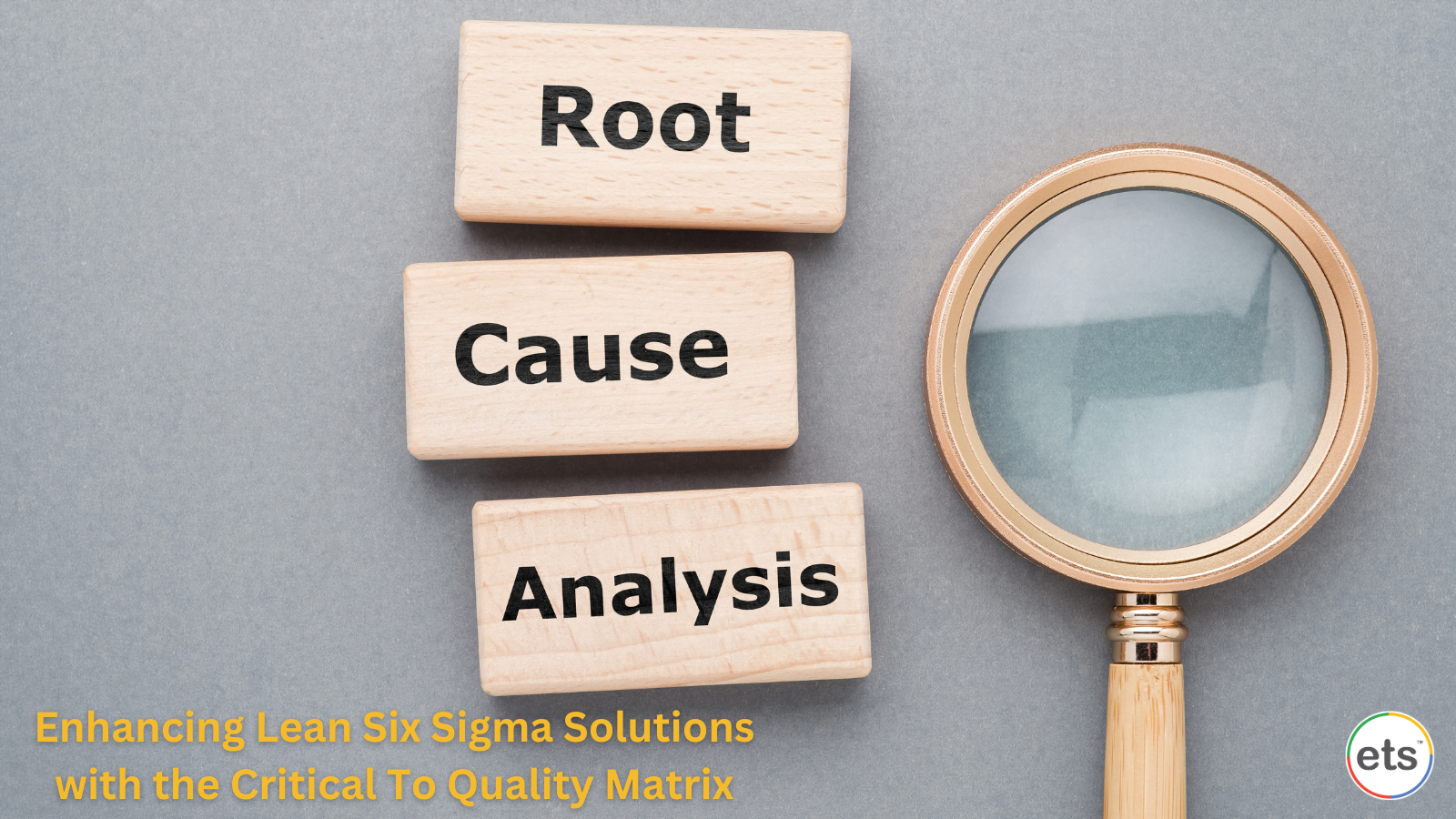
Although root causes may be identified and properly verified, Lean Six Sigma process improvement projects can still fail because planned solutions are not successful. This could be because of the approaches applied during solution development, implementation, and/or standardization. But if planned solutions are improperly designed in the first place, the potential for failure increases exponentially. Applying the Critical to Quality (CTQ) Matrix in the design phase of the DMAIC Improve step can help strengthen proposed solutions and the likelihood of success.
What is the CTQ Matrix?
The CTQ Matrix, Diagram, or “Tree”, is a systematic approach for translating customer needs into drivers, CTQ elements, and specific requirements, which are then represented by operational performance measures with targets or specification standards for achievement. CTQ Diagrams are typically used in process and product design, but can also be beneficial when applied to the development of operational solutions, particularly when coupled with project management techniques such as Work Breakdown Structure (WBS), risk analysis, and action planning.
What is Work Breakdown Structure?
WBS is a systematic approach for breaking a project (or proposed solution) into its basic elements, namely, phases, deliverables, and tasks. Doing so enhances the ability to better define project accountabilities, responsibilities, schedules, costs, and risks.
Integrating CTQ and WBS
Solutions are effective only if they permanently eliminate root cause recurrence. Otherwise, they are only temporary fixes at best, or examples of the Hawthorne Effect at worst. The CTQ Matrix can be used to link the root causes from the DMAIC Analyze step and the required solution’s deliverables identified from WBS analysis, as shown in the third and fourth columns of the figure below.
| Critical to Quality (CTQ) Matrix | |||
| Need | Drivers | CTQ
(Root Causes) |
Requirements
(Deliverables) |
| Ability to Solve Problems | Ability to Define Problems and Identify Root Causes | No Systematic Approach | DMAIC Training |
| No Data Analysis Training | Excel Training | ||
| No Graphics Training | Charts and Graphs Training | ||
| Ability to Develop Solutions | No Risk Analysis Training | Barriers and Aids Training | |
| No Action Planning Training | Gantt Chart Training | ||
| No Standardization Training | Process Control System Training | ||
Once the deliverables are identified, they can be broken down further into actionable tasks for risk analysis and inclusion in the proposed solution’s action plan. Another tool from the Lean Six Sigma toolbox that can be helpful for developing robust action plans is the Quality Function Deployment (QFD) House of Quality. This tool can be used to convert the general requirements of the fourth column into more specific technical requirements of the proposed solution. Action plans which are specific and delineate what, when, and who are more likely to be successfully executed than those that are vague.
Summary
Lean Six Sigma initiatives generally focus mostly on the application of statistical tools to confirm cause and effect, but little on solution development, implementation, and standardization. Applying CTQ and integrating it with WBS, risk analysis and action planning can help ensure your clients’ requirements are met, and that your process improvement initiatives achieve impactful and sustainable results.
